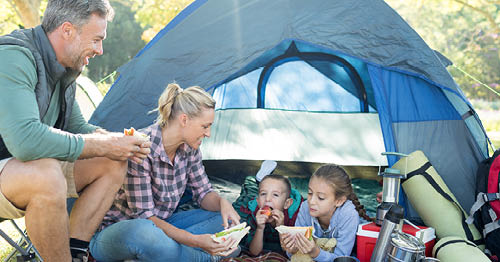6 Ways Online Students Can Socialize Outside of the Classroom
by Phoebe Brown
byEmily Ewen
4 min to readHealthy movement. Nature discovery. Lifelong memories. These are just some of the benefits of playing outside as a family. But when school, activities, and other life priorities get in the way, it can be difficult to carve out time for regularly enjoying the outdoors.
National Play Outside Day happens on the first Saturday of every month. The purpose is to create a habit of outdoor fun and activities for families, including kids, adults, parents, and grandparents alike. No matter your age or stage of life—everyone can benefit from a little more outdoor play.
Spending time outdoors and playing in nature can benefit both our physical and mental health and well-being:
The more time you spend outside, the more opportunities you have to run, jump, move, and play. Every family member big or small can benefit from physical activity in the fresh air. Activities like outdoor sports, walking, hiking, biking, playing on playgrounds, and more can all help kids strengthen their bodies and grow stronger.
One of the best ways to soak up vitamin D is through natural sunlight exposure. Getting enough vitamin D plays an important role in strengthening your bones and helping your body absorb the calcium it needs.
With so many ways to play, time outdoors can result in a more unstructured style of fun. Let your kids interact with nature, explore, and decide which activities interest them the most. From creating new recipes in the “mud kitchen” to making sandcastles on the beach, there are so many ways to play that can feel new and exciting for the whole family.
Studies show that spending time outside and getting enough sunlight can help boost your mood and feelings of happiness. Natural light also stimulates the pineal gland, which is a part of the brain that can strengthen the immune system.
At the same time, when you spend time outdoors, it’s easier to unplug and let your mind slow down and relax. Both kids and adults can benefit from time away from the distractions of the digital world.

When it comes to planning your time spent outdoors as a family this year, the possibilities are endless. Whether you’re feeling ambitious and want to plan an elaborate day full of activities or a simple walk around the park, it's all about breathing in that fresh air and enjoying time together. Here are five ideas to add to your list for every first Saturday of the month:
There’s arguably nothing better than dining al fresco when the weather is nice. Set up a spot on your patio or take a quick adventure to a nearby park. Pack up some fun picnic recipes or finger foods that will be easy to eat outdoors. Bonus: Bring some books along to enjoy while you take in the fresh air.
If you have young kids—and even older kids can get in on the fun—creating a “mud kitchen” in your backyard can lead to hours of outdoor entertainment. All you need is a few old pots, pans, utensils and some dirt for your kids to bring their mud cakes, pies, or potions to life. This is a great way for kids to learn about counting, measuring, following a recipe, and so much more. Try searching for “mud kitchen” recipes for kids online for even more creative ideas.
Hiking can happen anywhere! Search for a nearby trail, explore a new neighborhood, or walk through a local nature preserve. Make a game of it by encouraging your kids to point out things in nature along the way. If you see an interesting plant or animal, try researching it as a family so everyone can learn something new.
Encourage another family to enjoy the outdoors with you by inviting them out for an activity. Meet up at a local park, beach, pool, or field and choose something that everyone can do together—such as a friendly sports game or a swim in refreshing waters.
If it’s a clear night, looking up at the night sky can be a fun way to get your kids hyped up about science and space. It’s best if you can get to an area away from light pollution. Before you go, look up the constellations and planets that are visible this time of year in your location—then have your kids try to spot them!
Discover more ways to get outside and moving throughout the week with our Healthy Study Break Ideas or learn about How Physical Education Works in Online School.
